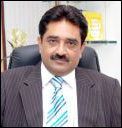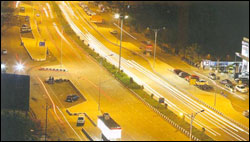 — Satish D. Parakh, Managing Director, Ashoka Buildcon Ltd
— Satish D. Parakh, Managing Director, Ashoka Buildcon Ltd
Ashoka Buildcon Ltd, based in Nashik, Maharashtra, focuses on building and operating roads and bridges on BOT basis and is currently has one of the highest numbers of toll based BOT projects in India. Satish D. Parakh, in an email interaction with Jibran Buchh, shares his thoughts on the EPC sector, the manpower crisis and opportunities in road projects among other issues.
To begin with, can you share your views on the manpower scenario in the EPC sector?
There is, in fact, a shortage of manpower right from skilled and unskilled workers to semistrength workers and if one talks about the management or engineers, even there we have a shortfall which has created a stress in the sector.
Would you credit this problem specifically to NEREGA?
No, not completely. Development has started in all the states like Bihar and Uttar Pradesh. These are the same states from where major manpower used to come and now they have jobs in their own state. Now there is a similar situation in states like Odisha and Jharkhand where mass development has started. So for a worker the first preference to work will be his/her own state.
Comparing growth and the manpower pool, there is a big gap and this situation has put a lot of stress on various EPC and construction companies. The growth rate of last five or 10 years where we wanted to build 2 km of road per day has increased to 20 km a day. This is 10 times more, so shortage is genuine and inevitable.
 How can we overcome this gap in manpower?
How can we overcome this gap in manpower?
Mechanisation could be a solution. End number of machines has been transported to the Indian subcontinent. This will significantly shift the output. The other solution is a skilled development programme which is already taking place in India, conducted by various organisations; this may help scale up the manpower pool.
What are the major challenges faced by the EPC sector?
One of the major challenges faced is in grouting projects where one has to stick to the existing alignments or widen the existing alignments. Removing encroachments or establishments that are built on the project site over the years is a huge challenge and a difficult job too. Alignments then may pass through forest and railway lines for which taking permission and seeking environmental clearance is one big challenge.
What do you think about the government’s decision to lift curbs on transfer of government owned land?
It’s a very positive decision. Land transfer was one of the major hurdles because if the land belonged to, say, the Ministry of Railways or any other ministry the whole processes used to take a lot of time. So now the transfer process may take less time and will be easier. What I am saying is that one doesn’t need to own the land e.g. if there is an NHAI project the land will be transferred in its name and we will do the job for them.
 NHAI has set a target of 9,600 km out of which 4,000 km will be allotted to EPC companies. Do you think this is a change of strategy on NHAI’s part?
NHAI has set a target of 9,600 km out of which 4,000 km will be allotted to EPC companies. Do you think this is a change of strategy on NHAI’s part?
I don’t think there is a change of strategy on their part. Some 4,000 km will be allotted where PPP is not viable and where NHAI finds potential. Road winding is required wherein one lane will be widened into two lanes and two lanes upgraded to four lanes.
What is your opinion on NREGA?
I think NREGA is not required where development is taking place rapidly; wages are significantly higher than what they used to be in earlier days. A skilled worker draws 300 to 400 per day which is minimum wage; now private companies are paying much more than what NREGA has to offer.
What is Ashoka Buildcon’s strategy for now?
The EPC sector is the strength of Ashoka Buildcon and we will continue to work on it. Another sector we look forward to work on or peruse is BOT projects.












Superb Website
[…]please visit the sites we follow, including this one, as it represents our picks from the web[…]…